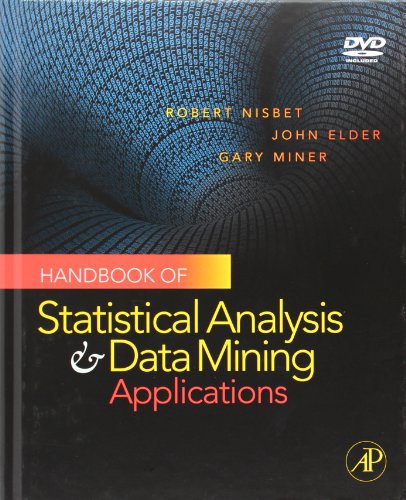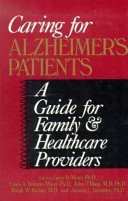Gary D. Miner
Gary D. Miner, Ph.D.
Miner.Gary@gmail.com
Dr. Gary Miner received his B.S. from Hamline University, St. Paul, Minnesota with biology, chemistry and education majors; M.S. in Zoology & Population Genetics from the University of Wyoming, and his Ph.D. in Biochemical Genetics from the University of Kansas as the recipient of a NASA Pre-Doctoral Fellowship. During the doctoral study years, he also studied mammalian genetics at The Jackson Laboratory, Bar Harbor, ME, under a College Training Program on an NIH award; and another College Training Program at the Bermuda Biological Station, St. George’s West, Bermuda in a Marine Developmental Embryology Course, on an NSF award; and a third College Training Program held at the University of California, San Diego at the Molecular Techniques in Developmental Biology Institute, again on an NSF award. Following that he studied as a Post-Doctoral student at the University of Minnesota in Behavioral Genetics, where, along with research in schizophrenia and Alzheimer’s Disease, he learned “how to write books” from assisting in editing two book manuscripts of his mentor, Irving Gottesman, Ph.D. (Dr. Gottesman returned the favor 41 years later by writing two tutorials for this PRACTICAL TEXT MINING book). After academic research and teaching positions, Dr. Miner did another two year NIH-Post-Doctoral in Psychiatric Epidemiology and Biostatistics at the University of Iowa where he became thoroughly immersed in studying affective disorders and Alzheimer’s Disease. All together he spend over 30 years researching and writing papers and books on the genetics of Alzheimer’s Disease (Miner, G.D., Richter, R, Blass, J.P., Valentine, J.L, and Winters-Miner, Linda. FAMILIAL ALZHEIMER’S DISEASE: Molecular Genetics and Clinical Perspectives. Dekker: NYC, 1989; and Miner, G.D., Winters-Miner, Linda, Blass, J.P., Richter, R, and Valentine, J.L. CARING FOR ALZHEIMER’S PATIENTS: A Guide for Family & Healthcare Providers. Plenum Press Insight Books: NYC. 1989). Over the years he held positions, including professor and chairman of a department, at various universities including The University of Kansas, The University of Minnesota, Northwest Nazarene University, Eastern Nazarene University, Southern Nazarene University, Oral Roberts University Medical School where he was Associate Professor of Pharmacology and Director of the Alzheimer Disease & Geriatric Disorders Research Laboratories, and even for a period of time in the 1990’s was a visiting Clinical Professor of Psychology for Geriatrics at the Fuller Graduate School of Psychology & Fuller Theological Seminary in Pasadena, CA. In 1985 he and his wife, Dr. Linda Winters-Miner [author of several tutorials in this book] founded The Familial Alzheimer’s Disease Research Foundation [aka “The Alzheimer’s Foundation] which became a leading force in organizing both local and international scientific meetings and thus bringing together all the leaders in the field of genetics of AD from several countries, which then lead to the writing of the first scientific book on the genetics of Alzheimer’s Disease; this book included papers by over 100 scientists coming out of the First International Symposium on the Genetics of Alzheimer’s Disease held in Tulsa, OK in October, 1987. During part of this time he was also an Affiliate Research Scientist with the Oklahoma Medical Research Foundation located in Oklahoma City with the University of Oklahoma School of Medicine. Dr. Miner was influential in bringing all of the world’s leading scientists working on Genetics of AD together at just the right time when various laboratories from Harvard to Duke University and University of California-San Diego, to the University of Heidelberg, in Germany, and universities in Belgium, France, England and Perth, Australia were beginning to find “genes” which they thought were related to Alzheimer’s Disease. During the 1990’s Dr. Miner was appointed to the Oklahoma Governor’s Task Force on Alzheimer’s Disease, and also Associate Editor for Alzheimer’s Disease for THE JOURNAL OF GERIATRIC PSYCHIATRY & NEUROLOGY, which he still serves on to this day. By 1995 most of these dominantly inherited genes for AD had been discovered, and the one that Dr. Miner had been working on since the mid-1980’s with the University of Washington in Seattle was the last of these initial 5 to be identified, this gene on Chromosome 1 of the human genome. At that time, having met the goal of finding out some of the genetics of AD, Dr. Miner decided to do something different, to find an area of the business world, and since he had been analyzing data for over 30 years, working for StatSoft, Inc. as a Senior Statistician and Data Mining Consultant seemed a perfect “semi-retirement” career. Interestingly (as his wife had predicted) , he discovered that the “business world” was much more fun than the “academic world”, and at a KDD-Data Mining meeting in 1999 in San Francisco, he decided that he would specialize in “data mining”. Incidentally, he first met Bob Nisbet there who told him, “You just have to meet this bright young rising star John Elder!”, and within minutes Bob found John introduced me to him, as he was also at this meeting. As Gary delved into this new “data mining” field, and looked at statistics text books in general, he saw the need for ‘practical statistical books’ and started writing chapters, and organizing various outlines for different books. Gary, Bob and John kept running into each other at KDD meetings, and eventually at a breakfast meeting in Seattle in August of 2005 decided they needed to write a book on data mining, and right there re-organized Gary’s outline which eventually became the book Handbook of Statistical Analysis and Data Mining Applications, 2009, published by Elsevier. And now, this interest has brought you, the reader, the book you are holding in your hands, PRACTICAL TEXT MINING. Gary has additional chapters, some drafts written in the early 2000’s, still unpublished, that most likely will be updated and become part of maybe at least two more books, one on medicine, health care delivery, and epidemiology, and another on use of predictive data analysis for education. All thanks to Dr. Irving Gottesman, Gary’s “mentor in book writing”, who planted the seed back in 1970 while Gary was doing a post-doctoral with him at the University of Minnesota.
Popular items by Gary D. Miner
View all offers-
Practical Text Mining and Statistical Analysis for Non-structured Text Data Applications
Miner, Gary D.; Elder, John; Fast, Andrew; Hill, Thomas; Nisbet, Robert; Delen, Dursun
Item prices starting from
View 8 offers£ 4.48
-
Handbook of Statistical Analysis and Data Mining Applications
Nisbet
Item prices starting from
View 23 offers£ 5.20
-
Familial Alzheimer's Disease: Molecular Genetics and Clinical Perspectives (Neurological Disease and Therapy)
Miner, G.D.; Et Al
Item prices starting from
View 8 offers£ 5.21
-
Handbook of Statistical Analysis and Data Mining Applications
Yale, Ken; Nisbet, Robert; Miner, Gary D.
Item prices starting from
View 15 offers£ 14.28
-
Caring for Alzheimer's Patients: A Guide for Family and Healthcare Providers
Miner, Gary D.; Winters-Miner, Linda A.; Blass, John P.; Miner, Gary
Item prices starting from
View 3 offers£ 17.71
-
HEALTHCARE's OUT SICK - PREDICTING A CURE - Solutions that WORK !!!!: Predictive Analytic Modeling, Decision Making, INNOVATIONS and Precision ... Correct the Broken Healthcare Delivery System
L. Dean, Darrell; Miner, Linda; D. Miner, Gary
Item prices starting from
View 37 offers£ 31.01
-
It's All Analytics!: The Foundations of Al, Big Data and Data Science Landscape for Professionals in Healthcare, Business, and Government
Burk, Scott; Miner, Gary D.
Item prices starting from
View 42 offers£ 19.82
-
The Executive's Guide to AI and Analytics: The Foundations of Execution and Success in the New World
Burk, Scott; Miner, Gary D.
Item prices starting from
View 34 offers£ 34.86
You've viewed 8 of 13 titles







